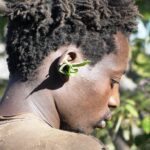Asian elephants (Elaphas maximus) are smaller than their African cousins but not less dangerous when in musth. That danger was already described for African elephants in this article on this website. In the following, we briefly compare the differences between both genera.

African elephants vs. Asian elephants

Musth in Asian elephants
Wild and tame male elephants experience a periodical manic disturbance called musth. During this period, the animal may have a bad temper and start fighting with other elephants. They will even try to attack any human they can reach, even their own Mahout or Caretaker.
Before it starts to go into Musth, oily secretion runs out of a small gland opening midway between the eye and the ear canal. The musth gland is about 200 mm / 8‘’ in diameter and lies flat under the skin. The opening is about 8 mm / 5/16‘’ in diameter and lies in the gland’s middle. The characteristics of the gland are very similar to those of tallow glands, which, however, are generally lacking in elephants.
About 1 – 3 weeks after the appearance of this secretion, the animal becomes restless and aggressive. These symptoms come on every year or may be postponed for some time. In Thailand, they usually occur in the cold season (Dec-Feb) but sometimes in the hot or dry season. The symptoms last from a few days up to as many as six months, depending on the maturity of the elephant.
Method of how to handle domesticated elephants in Musth
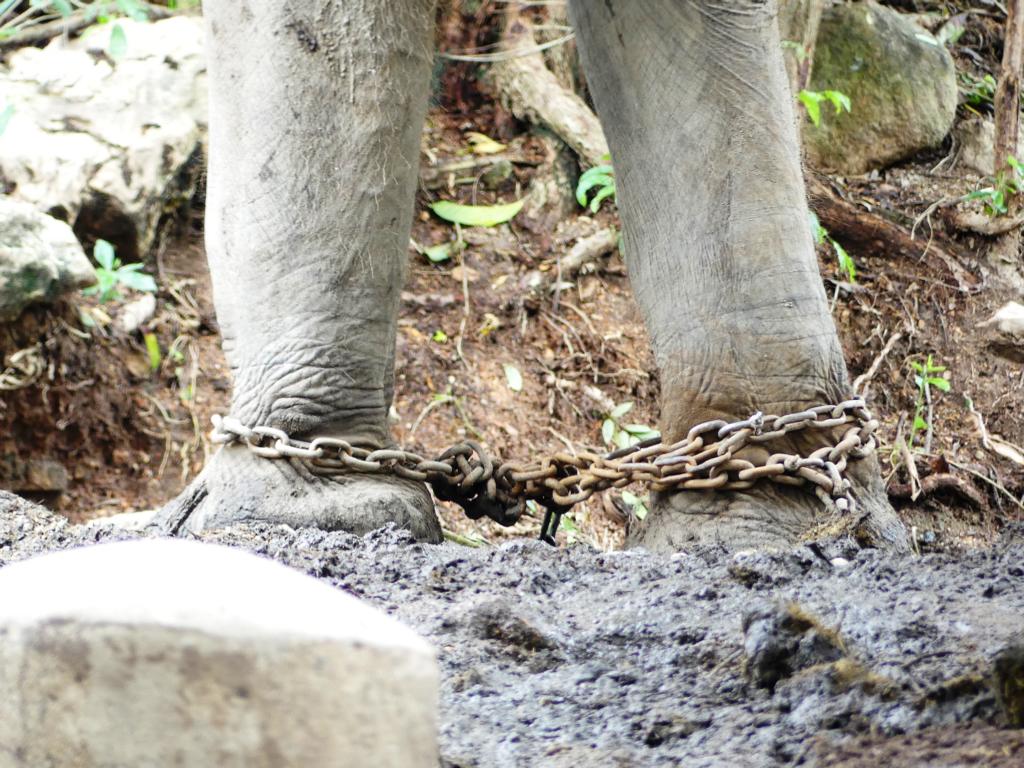
Mahouts usually observe the appearance of oil from the musth gland. When it appears, they will isolate the animal and put nooses of rattan or strong chains on the ankles. First, both forelegs will be chained together, and then a strong chain will be tied around the ankle of one of the hind legs. This hind leg chain will be tied to a big tree.
The elephant is left with little grass and water; if it becomes restless, all water and food are stopped. The weakness of hunger and thirst helps to keep the animal from being too aggressive. During the dangerous period, there is often a partial retention of urine, and the urine is constantly dribbling away. As soon as the urine is passed freely, the Caretakers consider the dangerous period over, irrespective of the amount of discharge from the glands.
Examples of danger by elephants
Kaeng Krachan National Park, Petchaburi Province, Thailand
We were on a week-long primitive trail in Kaeng Krachan National Park. The biggest fear of the two accompanying NP-Rangers was meeting an elephant bull in musth in the forest. They intentionally wore a machete on their hip, which, when walking, rattled all the time in its sheath. To hush away elephants in this dense, evergreen tropical forest.
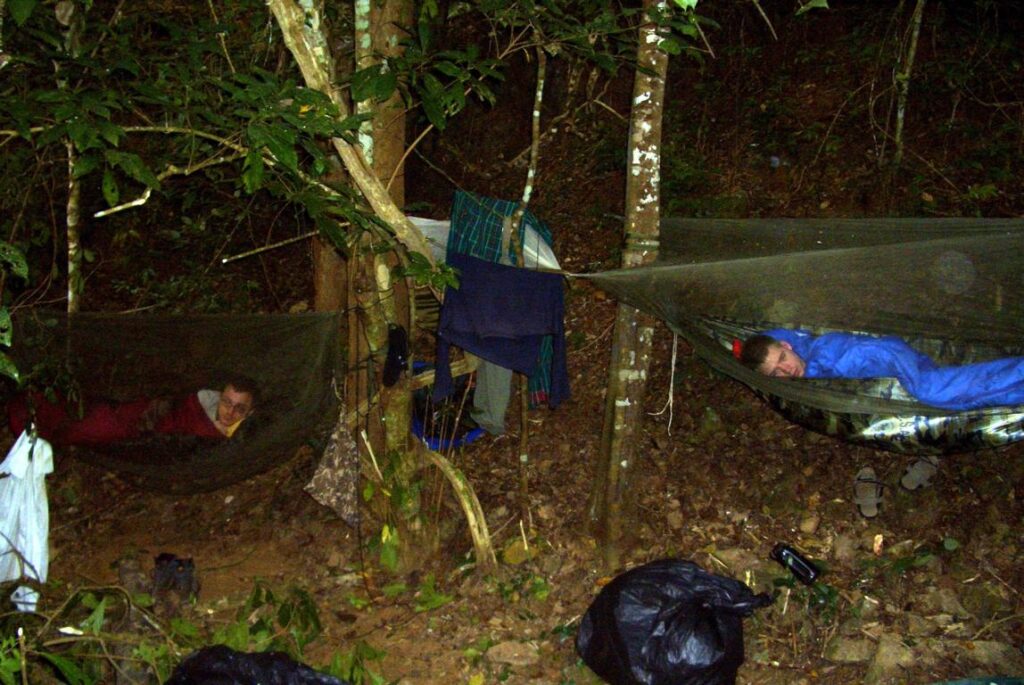
We surrounded the sleeping spot in the evenings with a ring of white plastic bags. The bags were placed on small strings at eye height on all possible approaching lines. They swayed in the wind and scared away any approaching elephant during nighttime.
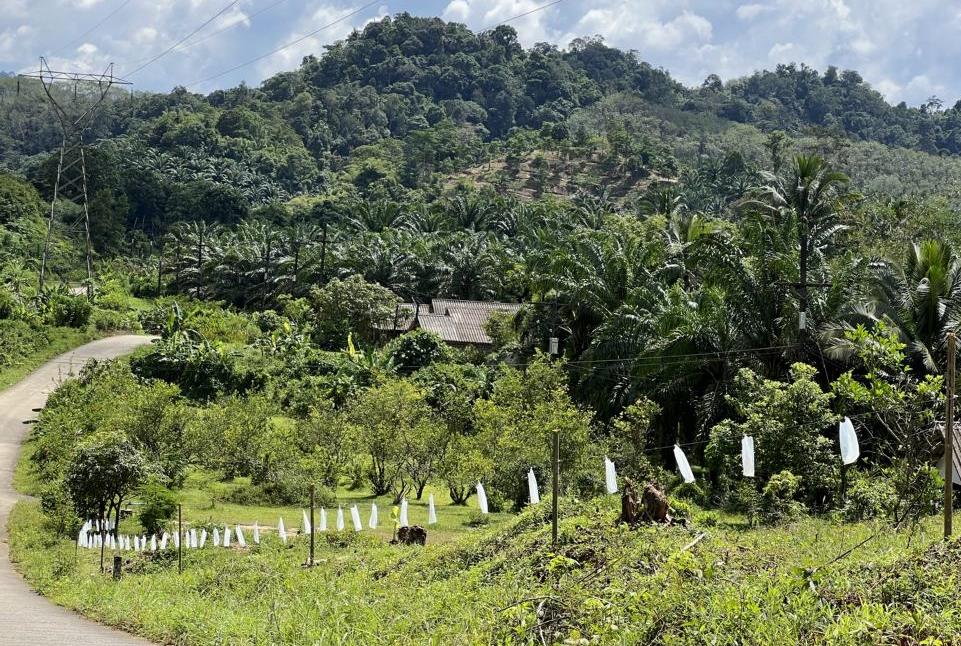
Similarly, Southern Thailand’s farmers protect their orchards from raiding elephants with lines of white plastic bags.
Another possibility for keeping elephants out of certain places would be using a loudspeaker emitting the sounds of agitated bees. This effect is scientifically proven; see here. Elephants highly fear getting bees into their trunk or ear channels.
Near Royal Belum Perak State Park, Malaysia
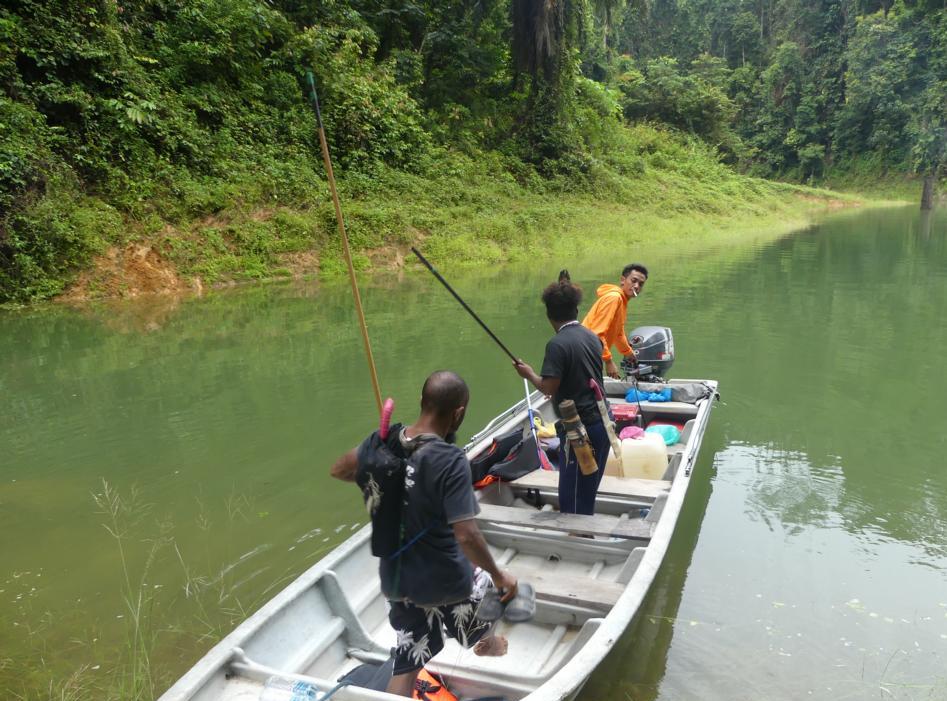
On a hunting trip with the Orang Asli people, we wanted to land our boat at a small bay, which would have been ideal for ascending into the forest. Before descending from the boat, the hunters saw fresh signs of elephants, which went into the water this morning. Both Orang Aslis briefly discussed the situation and were very adamant about driving the boat far away from that area. In the following picture, you can see the loamy soil with the elephant’s footprints.

According to the Orang Asli, the herd of elephants still lingered around the bay and would attack us if coming too close. Further questioning revealed that from the local elephant population, only bulls in musth are dangerous. But – according to these two Orang Asli hunters – the government introduced elephants from the Johor area. And these are vicious and attack immediately. They could not explain the reason for that behavior. However, it is likely connected with the past experiences of these intelligent animals with poachers. Whatever it is, the Orang Asli were scared of these elephants.
Khao Kheow Open Zoo, Si Racha, Thailand
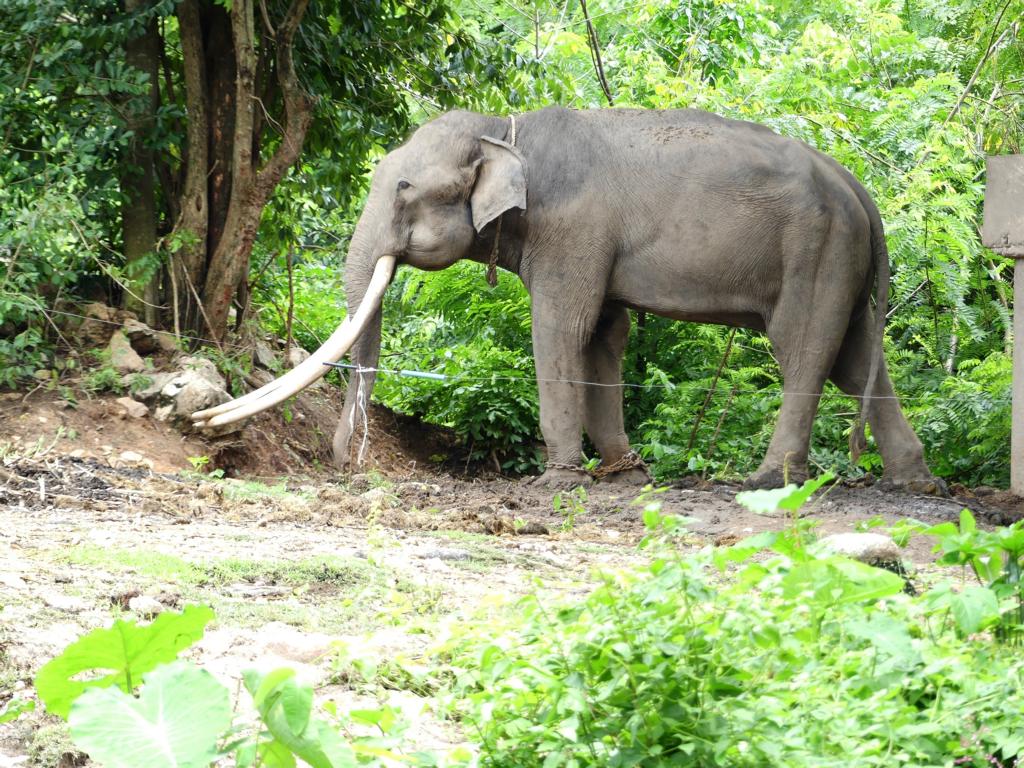
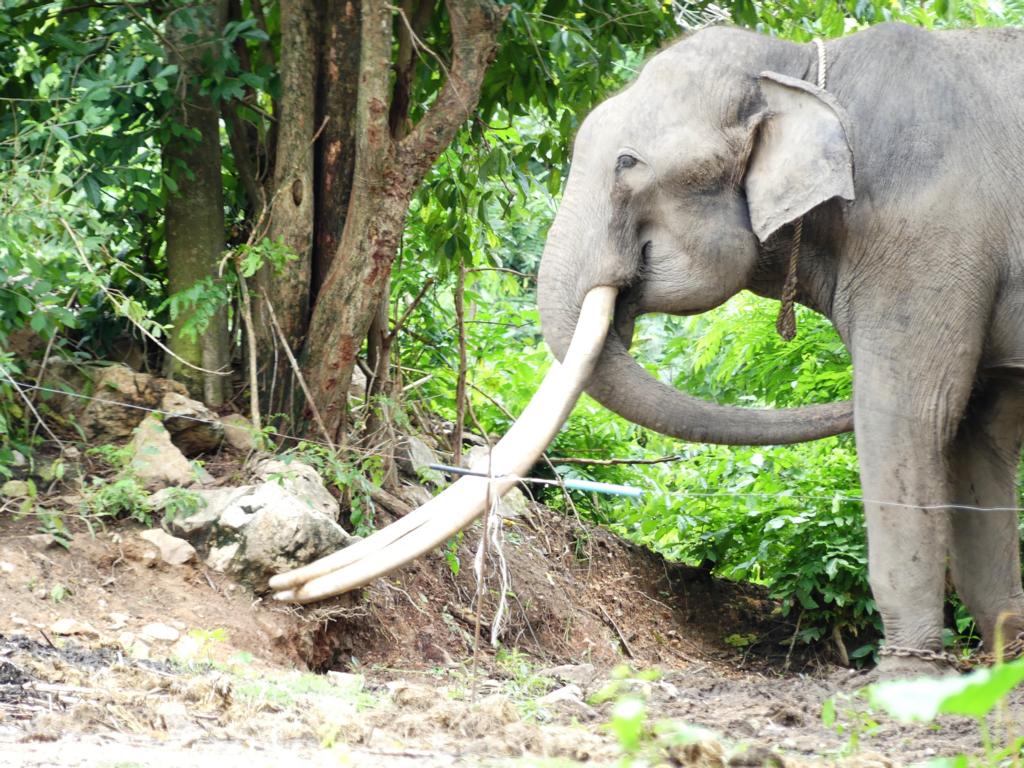
The bull elephant at the Khao Kheow Open Zoo in Si Racha, Thailand, must always be shackled during his musth period. He is getting too dangerous for other elephants and visitors. His two forelegs are chained together. But instead of completely restricting his movements by a second chain to one of his hind legs, he is surrounded by an electric fence. This is not a safe method, as their tusks are non-conductive for electricity, and the bull elephant could easily break the fence. See this link to a YouTube video showing an African elephant destroying an electric fence in seconds.
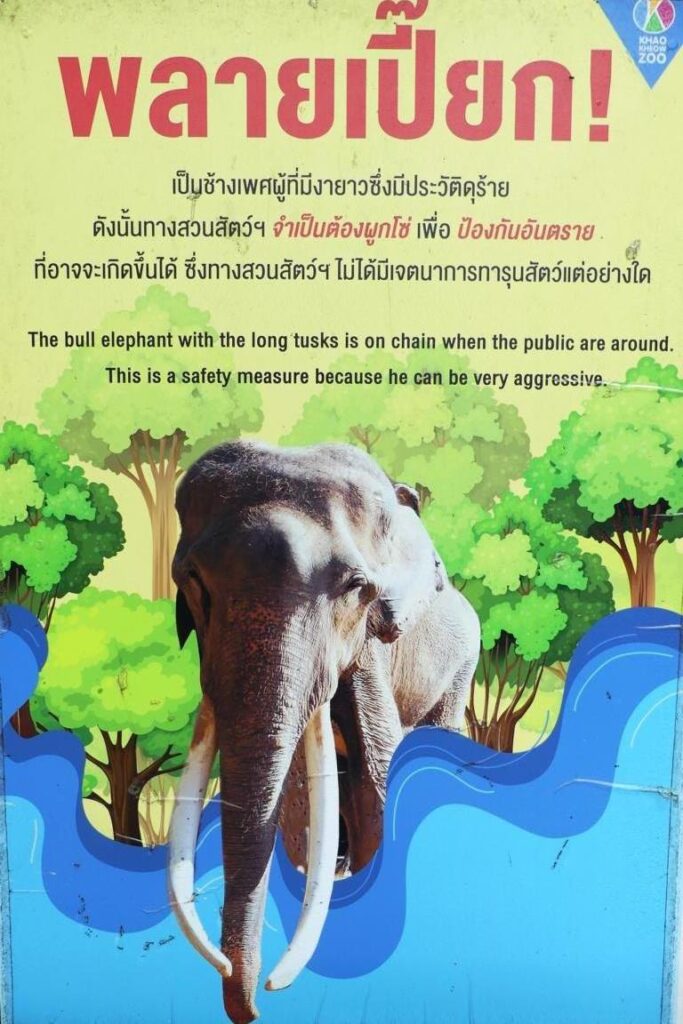
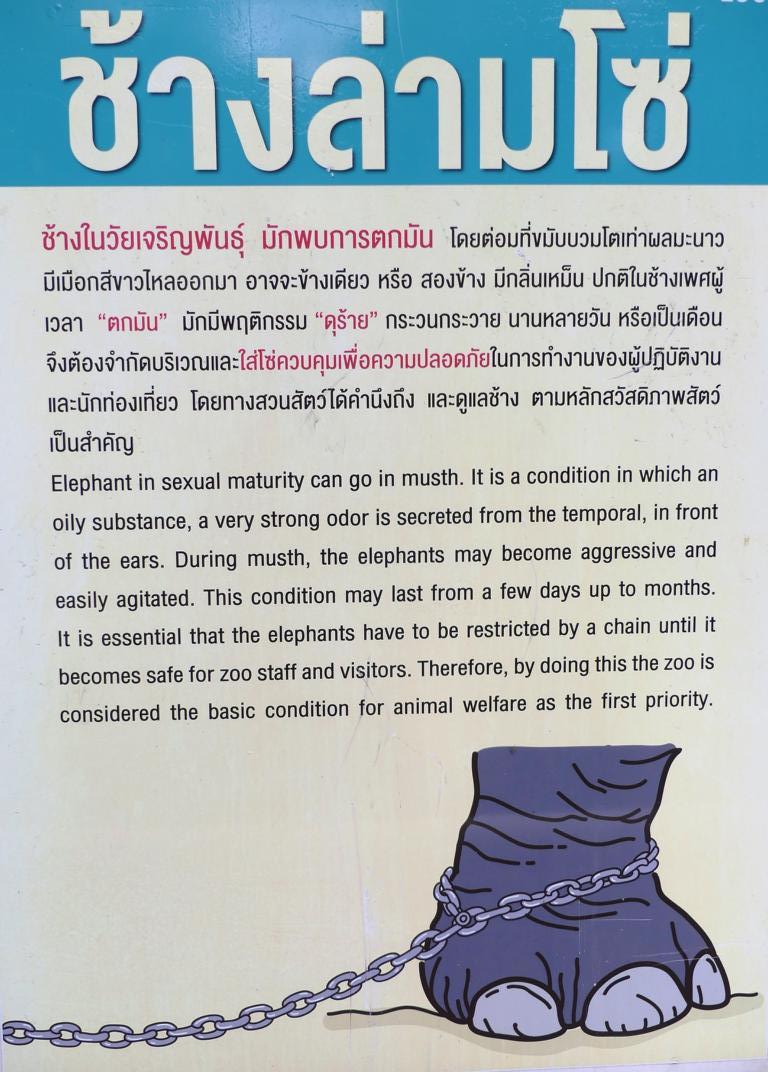
Lessons learned about danger by Asian elephants.
- Musth in Asian elephants is similar to that of African elephants, although both belong to different genera.
- Tame Asian elephant bulls in Musth will be shackled and starved to keep people safe and the elephants less aggressive.
- Wild Asian elephants can be scared away by fluttering white plastic bags.
- Catching and transferring elephants from one place to another could protect them from poachers and create problems in the new area.
.



